Taken: The coldest case ever solved
Chapter 1 — 1957: A child is taken
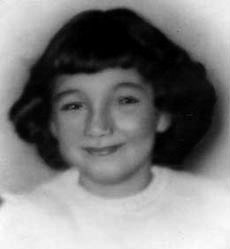
Sycamore, Illinois
Maria was the pretty one, slight and graceful at 7 with big brown eyes that shined with warmth and intelligence. Everyone said the second-grader was special and Kathy, who was a year older, felt honored to be her friend.
They lived a few doors away from each other on a side street called Archie Place. It was their whole world in 1957, a time when children played hide-and-seek outside instead of watching television. People didn't lock their doors in this Midwestern farm town because everyone knew everybody else.
Sycamore and its 7,000 souls felt safe on the morning of December 3, 1957, but the feeling wouldn't last.
That first Tuesday in December started like any other for Maria Ridulph and Kathy Sigman, with a short walk across the street to West Elementary School. It was cold, with a promise of snow in the air. After school, they went to Maria's house to cut out paper snowflakes.
A few blocks away, a man in an overcoat spotted two other girls walking along State Street by the public library and tried to strike up a conversation. It was 4:15 p.m. The girls felt uneasy, so they ducked into a restaurant. When they emerged, the man was gone — but he'd left something disturbing behind. Scattered on the sidewalk were half a dozen photographs of nude women.
That wasn't Sycamore's only peculiar hint of the dirty and forbidden. Since Halloween, someone had been scrawling obscenities in chalk on a tree and stop sign at the intersection of Center Cross Street and Archie Place. Maria and Kathy made plans to play there after dinner. It was a favorite spot they hadn't been to since summer.

At 5 p.m. sharp, Kathy went home. Maria's family gathered around the table for her favorite supper: rabbit, carrots, potatoes and milk. She finished off two rabbit legs, but barely touched her vegetables. She pleaded to go back outside as the first flurries of the season started to swirl in the night sky.
Excited, she called Kathy on the phone: I can go outside tonight, can you?
Kathy lived in a white cottage at the end of a long driveway, and her family was the first on the block to own a clothes dryer. Her freshly laundered jeans still felt warm as she met Maria at mid-block and they raced in the dark to the massive elm tree on the corner. They were playing "duck the cars" — scurrying back and forth between the tree and a street pole, trying to avoid the headlights from oncoming cars — when a good-looking young man approached. He wore his blond hair swept back in a ducktail. Kathy remembers his narrow face, big teeth and high, thin voice. She'd never seen him before.
Hello, little girls, he said. Are you having fun?
He asked whether they wanted piggyback rides and gave his name as "Johnny." He told Kathy and Maria that he was 24 and wasn't married.
Do you like dollies?
The girls nodded.
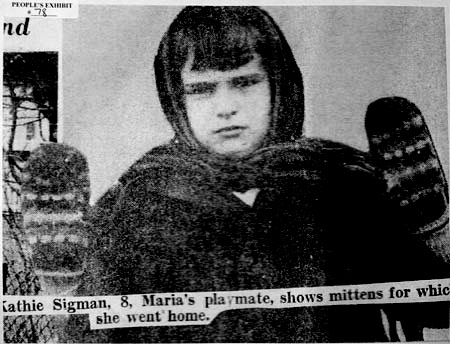
By the time these events were recalled in a Sycamore courtroom 55 years later, memories had faded and many details noted in police and FBI reports were lost to time.
But nobody could forget the piggyback ride. That was how Johnny won Maria over.
Down he trotted, 20 feet to the south along Center Cross Street and back again, Maria giggling with glee on his shoulders. When it was over, she ran to her house, three doors away at 616 Archie Place, to fetch a doll for the next piggyback ride.
Kathy waited on the sidewalk with Johnny. He asked whether she wanted to take a walk around the block or go on a trip in a truck, car or bus. No, she told him. He told her she was pretty, but she sensed it was Maria he liked more.
Maria burst into her house to find her father, Michael, in the living room watching a Western. Her mother, Frances, was reading a newspaper. Maria picked out a favorite doll from the toys piled by the door, but her mother suggested she take an older rubber doll out into the snow instead.
Kathy felt a chill as Maria joined them on the sidewalk. Now it was Kathy's turn to run home, to fetch her mittens. She asked Maria to come along, but she didn't want to go.
When Kathy returned a few minutes later, Maria and Johnny were gone.
The trouble with cold cases
The kidnapping and murder of Maria Ridulph is the nation's oldest cold case to go to trial. It required family members to turn against one of their own and haunted a small town for 55 years. Even now, the case may not be over.
Maria was taken in a more innocent time — decades before Amber Alerts and photos of missing children on milk cartons became part of our cultural landscape. In 1957, the kidnapping of a little girl shattered everyone's sense of safety. It was huge news.

Reporters flocked to Sycamore from the big city papers in Chicago and New York and from the fledgling television networks. FBI Director J. Edgar Hoover demanded daily updates from his men and sent teletypes with detailed instructions. President Dwight D. Eisenhower followed the case. But the weeks of urgent activity were followed by half a century of silence.
Secrets often lie at the heart of crimes that remain unsolved so long they are said to go "cold." Most are cracked by advances in science, or by someone's need to come clean.
In the Ridulph case, there was no DNA, no confession by the killer. This mystery was solved by circumstantial evidence amassed over four years by bulldog cops and other outsiders who came to Sycamore to stand up for a little girl whose life was stolen.
But it is difficult to reconstruct the past in a courtroom. People die, memories fade and facts can become distorted by the passage of time or shaded by personal grudges and agendas.
As tough as it is to build a cold case, it may be even harder to defend one. Imagine trying to explain what you were doing a year ago. Now imagine trying to explain what you were doing a lifetime ago.
The man convicted last September of kidnapping and murdering Maria Ridulph maintains his innocence. His wife of nearly 20 years and his stepdaughter say he was sacrificed to bring peace of mind to Sycamore. An appeal has been filed and likely will take two years or more to be heard.
Winning a conviction in a crime that occurred in 1957 is a remarkable accomplishment – proof that no one should get away with murder, even if justice takes 55 years. But a close examination of the case by CNN raises questions about the strength of the evidence, the motives of some of the witnesses and the ability of the court system to fairly and accurately reconstruct history.
The case was reopened after a dying woman implicated her own son 36 years after the fact. Her words, as recalled by two of her daughters, were somewhat cryptic, and there's no way to seek clarification. Even the daughters don't agree on what she said. And, separate from this crime, two siblings had powerful reasons to fear and despise their half brother.
Much of the physical evidence in the case was lost or destroyed over the years, including Maria's doll, which was handled by her killer. Instead, prosecutors relied heavily on evidence that in the past has often proven unreliable: eyewitness identification and the testimony of informants.
Eyewitness identification is not as simple as it might seem. Factors influencing misidentification include the witness's distance from the perpetrator, the lighting at the crime scene and the conditions under which a witness later views a lineup. Jailhouse informants bring their own baggage: They're criminals, or at least accused of crimes, and can be looking to trade testimony for leniency.
In the Ridulph case, three inmates locked up with the suspect told different stories about how he described killing Maria: by dropping her on her head, or by suffocating or strangling her while trying to silence her cries.
Yet a forensic pathologist testified Maria was stabbed.
The eyewitness whose testimony was crucial in winning a conviction was a child when she saw the kidnapper for just a few moments. More than half a century passed before she picked him out in a photo lineup. She is certain she chose the right man, but others question whether she picked up cues from the investigators and tried to please them with her choice. They wonder whether the photo itself — slightly different from the others she was shown — could have prejudiced her.
Illinois is second only to Texas in mistaken eyewitness identifications, according to the Innocence Project, which began its work in 1992. Faulty identifications played a role in 24 cases – more than half of the state's 43 wrongful convictions later overturned by DNA evidence. Nationwide, 75% of 309 wrongful convictions involved faulty eyewitness identifications; 15% were based partly on the testimony of informants who later recanted or were proven to have lied.
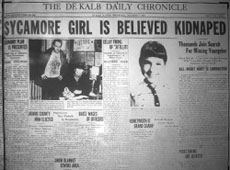
It was the job of Judge James Hallock to sort everything out. The defense requested a bench trial, and so prosecutors had to prove guilt to just one person, not 12. That one person, Hallock, had little experience with murder trials.
Hallock's verdict in this case came after four days of testimony. It was based, the judge said, on the credibility of the eyewitness and the jailhouse informants.
He expressed confidence that his decision would be upheld on appeal.
The goal in every trial is a fair hearing of both sides. And in most trials, witnesses take the stand to recount what they saw with their own eyes, what they heard with their own ears. But in cold cases, those witnesses often are dead.
When that's true, prosecutors and defendants are sometimes forced to rely on second-hand evidence known as hearsay. And in some states, including Illinois, the law is evolving to allow hearsay evidence under exceptional circumstances.
In this cold case, a hearsay statement that favored the prosecution was allowed into evidence; other hearsay evidence that favored the defense was kept out. And so, a mother was able to accuse her son from the grave, but his alibi, buried in thousands of pages of old FBI reports, was never presented in court.
A man was convicted and sent to prison for the rest of his life. A victim's family embraced long-awaited justice, and Sycamore breathed a sigh of relief. But was the courtroom reconstruction of history unfairly one-sided?
Was justice really served?
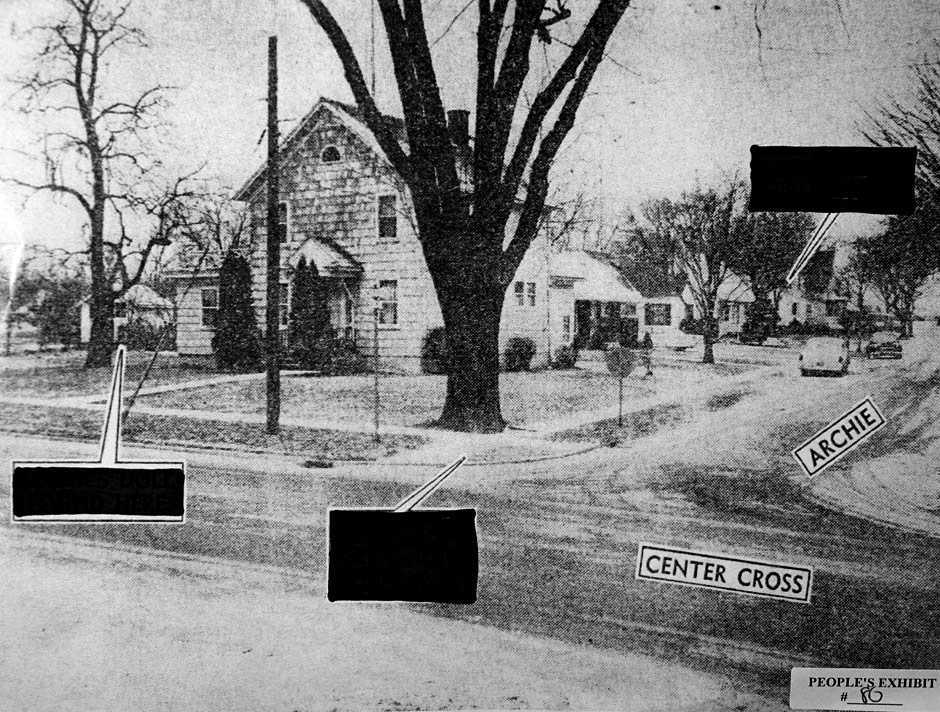
'I can't find Maria!'
"Mah-reeeee-ah!"
Kathy ran up and down Archie Place, calling her best friend's name as a gentle snow fell on the evening of December 3, 1957. There was no sign of Maria.
Kathy rushed up to a side door at the Ridulphs' house, where Maria's big brother, Chuck, was spinning records on the hi-fi with his friend Randy. Maria's lost, she told them. I can't find Maria!
Chuck and Randy set out down Archie Place, all the way to the corner of Fair Street, by the elementary school. The boys saw a police car go by and realized – too late – that they should have stopped it. They headed back home.
By then, Kathy had told her mother about the nice man who called himself Johnny. More details emerged as Maria's mother, Frances, and Kathy's mother, Flora, exchanged several frantic phone calls.
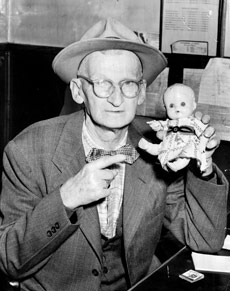
Maria's father was reluctant to summon police because he didn't want to be embarrassed if she had just wandered off. About a year earlier, Maria had strayed several blocks away to Elmwood Cemetery while playing. She turned up just as a search party organized.
But Frances Ridulph let worry overrule her husband. She drove to the Sycamore police station to report her daughter missing. It was 8:10 p.m.
Chuck continued looking for Maria, but the 11-year-old wasn't yet sure how concerned he should be about the little sister he walked to school every morning. He traipsed down a long driveway and through a garden that opened onto a field. Then he circled back to the alley that ran behind their home, where a sense of foreboding overcame him. There, next to Ida Johnson's garage, a searcher spotted Maria's doll.
That evening, men pounded on the door of 227 Center Cross Street, the home of Ralph and Eileen Tessier. Ralph ran the hardware store, and the men wanted him to open up so they could gather up flashlights and lanterns to use in the search.
The Tessiers were a large family crammed into small quarters about two blocks from the Ridulphs. Eileen was Ralph's Irish-born war bride who'd sailed to the United States on the Queen Mary with her son John from an earlier marriage. Together the couple would have six children: Katheran, Jeanne, Mary Pat, Bob, Janet and Nancy.
The girls resented the way their mother seemed to favor John. At 18, he was artistic, a bit of a dreamer. He seemed to get a pass with her even when he screwed up. He was expelled for pushing a teacher and calling her an unsavory name. But in their mother's eyes, he could do no wrong.
Ralph Tessier, who had just arrived home from picking up 12-year-old Katheran at a 4-H social, joined the men in the search that night. Eileen headed to the armory, where the women were making sandwiches and coffee for the searchers. Before they left, the couple locked the front door, even though the key had been lost for years. The back door didn't lock at all, so Ralph jammed it shut with a board.
The girls huddled with Bob inside; they'd have to let their parents back in when they returned.
They said they saw no sign of John.
In the days to come, police would knock on the door and question Eileen Tessier about the events of December 3. The older girls stood back and listened as their mother told the officers something they knew wasn't true: John was home all night.
'I know she is still alive'
The headline on the front page of Sycamore's afternoon paper screamed the bad news that everybody in town already knew: "Missing Girl, 7, Feared Kidnapped."

Foul play was suspected, but there were no clues. When she vanished, the newspaper said, Maria was wearing a brown, three-quarter-length coat, black corduroy slacks, brown socks and freshly polished saddle shoes. She was 43 inches tall, weighed about 55 pounds, and wore her hair in a wavy brown bob with bangs.
The man who called himself Johnny, police said, wore a striped sweater of blue, yellow and green. He had long, blond hair that curled in the front and flopped onto his forehead.
Already, there were conflicting reports about the exact time of Maria's disappearance. Was she snatched closer to 6 p.m.? Or did it happen later, at about 7? Police and FBI reports, as well as news accounts from the time, contain details that support both scenarios.
Sycamore's police chief, William Hindenburg, told FBI agents that Kathy and Maria went out to play at 6:02 p.m., but the DeKalb County sheriff said Maria didn't call Kathy and ask her to come out and play until 6:30. Maria's mother later altered her original estimate, saying the girls could have been outside as early as 10 minutes to 6.
When the case was reopened half a century later, every minute would matter.
As the days passed, Maria's mother pleaded with the kidnapper for her daughter's safe return. "God forgives mistakes. We would, too," Frances Ridulph, 44, said, using the media to send a message to whoever might have her daughter. Maria was "nervous," she said, a nail biter who could quickly become hysterical if things didn't go her way.
Maria would make a noise if something seemed wrong, her mother said. And no kidnapper "would put up with that for long."
"Whoever took her away hit her weak spot. He played with her," the frantic mother added. On television, she delivered a message to her baby: "Don't cry, Maria. Above all, don't cry. Don't make a fuss. We'll be with you soon."
Maria's father, Michael, who earned $80 a week at a wire and cable factory in Sycamore, scolded reporters camped out at the police station: "For God's sake, quit saying she is dead. I know she is still alive. Nobody would have any reason to kill her."
Later, he pulled one reporter aside and explained, "I want fathers to help look for my little girl."
Chuck Ridulph accompanied his dad to the fire station on the morning of December 4 and was assigned to a search team. Hundreds of people fanned out over the fields surrounding Sycamore. Others opened car trunks and cellar doors.
"People were even carrying guns," he recalled.

In a neighborhood called Johnson's Greenhouse, where new streets were going in, Chuck was asked to climb down a manhole because he was the only one in the search party small enough to fit. Later, searchers joined hands as they walked in a line through the frozen cornfields where Sycamore High School now stands. They found a gunnysack of abandoned kittens, and that unnerved Chuck. Other searchers discovered a torn, bloody petticoat in a farm field, but it was not Maria's.
Two FBI agents took up residence in the Ridulphs' parlor. A half dozen crop-dusters and military planes circled the sky, searching. The J-11 Roping Club sent riders out on horseback.
Local police with bullhorns urged residents to keep their porch lights on and report anything suspicious. The Illinois State Police set up half a dozen roadblocks; railroad cars, motel rooms and the bus station were searched — as was every house in Sycamore.
Maria's doll and blue hairbrush were shipped off to the FBI lab near Washington for analysis. So were her schoolbooks, a toy oven, a tin saxophone and records of songs such as "Three Little Kittens" and "The Farmer in the Dell." They bore witness to a childhood interrupted.
Her little friend, Kathy Sigman, found herself under 24-hour police guard. The family doctor checked her for signs of sexual molestation. The newspapers ran a picture of Kathy showing off her mittens and pointing to the corner where Maria was snatched.
Kathy spent hours poring over mug shots of ex-cons and what police called "known perverts," but she didn't see Johnny. She remembers the shouting reporters and flashing camera bulbs that appeared every time she was escorted to a police lineup. At first, she enjoyed the attention, but as the case dragged on she felt exposed, like she was being put on display.
She recalls her mother bending down, placing her hands on her shoulders and looking her square in the eye.
Remember his face, Kathy, she said. You have to remember his face because you are the only one who can catch him. You are the only one who knows what he looks like.
'We have found exactly nothing'
There was no ransom note. No phone call from the kidnapper. Authorities believed Maria's abductor had a twisted motive: He was a sexual predator.

The police chief was certain nobody from Sycamore would do such a thing. It had to be the work of a trucker or someone else passing through. The FBI wasn't so sure. As its investigation revealed, there was no shortage of potential suspects in town.
Hindenburg, the police chief, told reporters his men had rounded up and questioned "all known sexual deviates." They looked into a local Peeping Tom and followed tips about men nicknamed "Commando" and "Mr. X."
Investigators dug up a collapsed grave at Elmwood Cemetery. They traced freight cars that passed through Sycamore the night Maria went missing. They scoured lovers' lanes, drained a lake, set off dynamite in a quarry. And still they came up empty.
"We have chased down countless clues, and we have found exactly nothing," said a frustrated Carl A. Swanson, the state's attorney. FBI agents came and went, according to a writer for one of the Chicago papers, "checking into everything with the quiet persistence of bulldogs."
Three days after Maria vanished, an anonymous female caller alerted the DeKalb County Sheriff's Office to a boy named "Treschner" who lived in the neighborhood and fit the suspect's description. A pair of FBI agents showed up at the Tessier home on December 8.
Ralph and Eileen Tessier acknowledged that they had talked about how their son, John, fit the general description, but they insisted he was not in Sycamore when Maria was taken: He was 40 miles away, in Rockford, enlisting in the U.S. Air Force.
Phone records seemed to verify their story. Someone had made a collect call from Rockford to the Tessier home at about 7 p.m. John Tessier and his parents said he called for a ride home. This was the second alibi Eileen Tessier had given for her son. Earlier, as her daughters listened, she'd told Sycamore police that John was home all night.
Nobody questioned the young Tessier sisters, and they kept silent.
'Unusual individuals'
After a week of fruitless searching, authorities alerted residents to look out for scavengers: "It is entirely possible that her body has been discarded in a field or a nearby farm. Be alert to large gatherings of buzzards and crows, and if a body is located make sure nothing is touched."
The FBI was running out of steam.
"Our temporary office at Sycamore has been functioning for two weeks. Per diem cost for 29 agents is $3,600," Chicago's supervisor wrote in a December 15 memo to Hoover. They'd tracked down 250 leads and processed 200 suspects — "all with negative results."
Agents still had about 125 leads to go.
The Chicago G-man found it "most peculiar" that such a rigorous investigation had not turned up a suspect. The locals were passing on tips about "all of their homosexuals, queers and fairies, etc." when the FBI was looking for "sex deviants of a different kind," the supervisor wrote in the pejorative and politically incorrect language of 1957.
Agents were hampered by the "sheer volume" of leads, he stated, adding this observation: "I have never seen as small a city as Sycamore with such a large volume of these unusual individuals."
Hoover urged them to keep going: "This case must receive continuous, aggressive, imaginative, investigative attention."
The best evidence they had was Kathy's story. Some of the details varied — did Johnny have a missing tooth or a gap in his teeth? But she never wavered on the core facts. An agent described her as "the most completely mature little girl I have ever seen," seemingly fearless during questioning and police lineups. "She has remained steadfast," he reported, even though the FBI's bulldogs had "ridden her hard."

It was a somber holiday season in Sycamore. The local papers carried front-page stories about the Ridulphs, including a large photo of Maria's family sitting by their Christmas tree. Her mother had bought a typewriter for Maria and wrapped her other gifts.
Their leads exhausted, the FBI agents packed up and went home for the holidays. With no new developments, the case dropped from the headlines, but folks in town remained jittery. One Chicago newspaper noted at the end of January that Sycamore was afflicted with "a wound that won't heal." The place had changed, and not for the better.
"Let a strange man walk down an alley in Sycamore today and the police are likely to get a call," said James E. Boyle, an assistant prosecutor who went on to become state's attorney, and then a judge. "I tried to help two young girls across a busy intersection the other day. They just looked at me wide-eyed."
The giant elm tree on the corner of Archie Place and Center Cross Street was cut down. Sycamore settled into a fugue state.
Looking back, Kathy remembers her childhood in two parts: Before Maria was taken, and after.
"We were safe before, but not afterward," she said. "People can disappear in big cities but somebody doesn't disappear in a small town like Sycamore."

'There wasn't much left to her'
Maria was found in the spring, 120 miles from home. A man scrounging for morel mushrooms found her skeleton tucked under a fallen tree on Roy Cahill's farm off U.S. 20 outside Woodbine, not far from the Iowa border.
Birds and animals had fed on her corpse, clad only in a black-and-white checked shirt, an undershirt and brown socks.
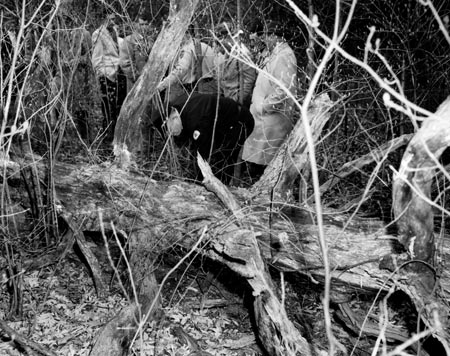
At a coroner's inquest, Frank A. Sitar, a retiree from Minnesota, described the scene he encountered on the afternoon of April 26, 1958:
"I thought it was an old deer hide. I came up to it then and I could see some bones and I thought somebody had shot a dog. Then I looked closer, and it looked like human bones. I noticed the jacket, but I didn't pay any attention to it until I noticed the skull. Then I started to look further, and I noticed the hair. And I saw then that it was a little girl."
He walked back to the car, told his wife, and they drove to a farmhouse and summoned authorities.
"There wasn't much left to her," observed James Furlong, the 28-year-old rookie coroner of Jo Daviess County. Son of the local funeral home director, he'd never handled a murder case before. No crime scene photos were taken, he said, because he didn't want them "slobbered all over the front pages."
Neither the autopsy nor the inquest determined a cause of death, beyond "suspected foul play."
Frances Ridulph always said if a child's body was found wearing brown socks, it would be Maria. Sure enough, the size and manufacturer's information stamped on the instep of Maria's socks could still be read. Her mother touched the patch she'd sewn on the black-and-white flannel shirt, recognizing the material. Dental records confirmed what the family already knew.
Maria was laid to rest in a small white casket on a warm spring day. An overflow crowd, at least 300, filled the Evangelical Lutheran Church of St. John. Her friend Kathy was there under police guard.
Maria was remembered as a bright little girl who had a perfect attendance record at Sunday school.
"This little girl has entered into everlasting peace, probably on the night she was taken," said the Rev. Louis I. Going. "Maria was taken out of life through unusual circumstances, but nothing could deprive her of God-given salvation."
The church organist played "Jesus Loves Me." It was Maria's favorite hymn.
The trail goes cold
The disappearance and death of her best friend never left Kathy. Nothing could fill the space where Maria once was – the games, the laughter, the shared secrets. She was left with survivor's guilt and the social stigma of being connected to a notorious crime.

"It robbed me of my childhood," she said recently. "I was labeled. I was the girl who was with Maria. A lot of parents wouldn't let their girls play with me. They were afraid he'd come back and take their child.
"I couldn't wait to get out of Sycamore. It bothered me my whole life why he took her and not me. For years I would ask myself, 'Was she prettier than I was?'"
Kathy's family moved away from Archie Place in 1961 to a subdivision on the outskirts of town. When a young man named Mike Chapman met her at a bowling alley, his mother tried to talk him out of dating her. "Don't you know who she is?" the mother asked. "She's the one who was with Maria. Can't you find someone else?"
But Mike wanted only Kathy, and she knew he was the key to a new life. They left Sycamore in 1969 and married in San Antonio, Texas, where Mike attended technical school. They moved around a bit, then settled in Tampa, Florida, before returning to Sycamore to care for aging parents. They raised three children.
Kathy says her own parents were so overprotective she felt like a prisoner. As a mother, she went the other way, letting her kids make their own decisions and their own mistakes. The couple now lives in St. Charles, about a half-hour drive from Sycamore.
No matter where they went, Kathy looked back over her shoulder.
Johnny was still out there.









